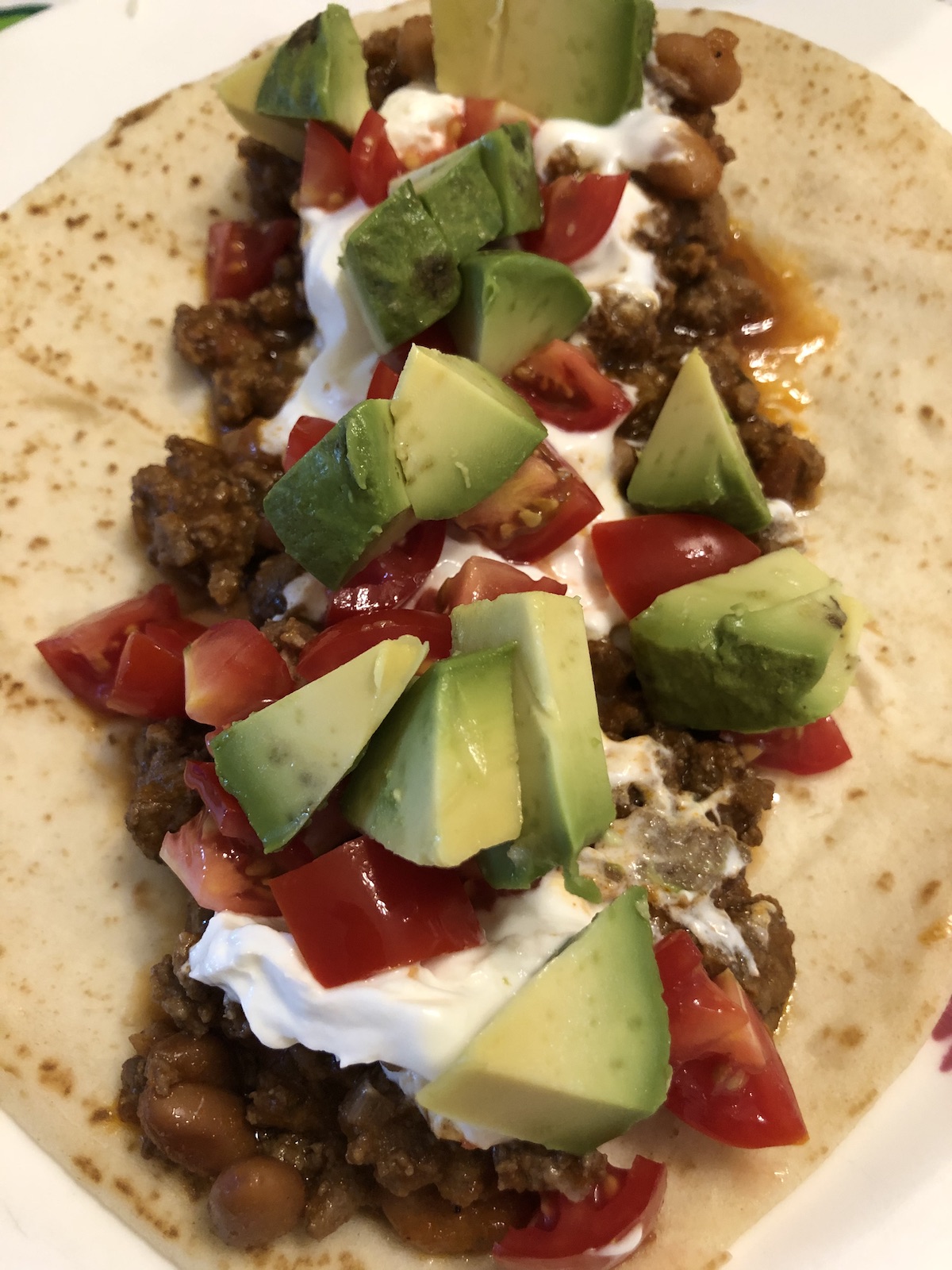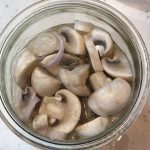
The Cooking Framework Quiz is available by clicking the button below.
Don’t miss an episode!
The button below will take you to Apple Podcasts to subscribe.
Or visit your favorite podcast provider to subscribe.
Thank you!
Transcript
Welcome to The Sensitive Kitchen. Where home cooks are inspired to Cook to Enable Those You Love to Flourish.
I’m Cindy Sullivan, registered dietitian, passionate nutrition educator, and accomplished home cook. Whether you’re changing how you cook for food sensitivities, allergies, intolerances, or just trying to eat healthier on a budget, you’re in the right place. Most episodes, I will share favorite recipes as well as modification tips, and nutrition benefits. Occasionally I’ll have a guest or special episode like modifying holiday favorites.
My favorite foods? They’re raspberries and homemade chocolate chip cookies. My latest cooking project was long fermented sourdough bread.
Cinco de Mayo is coming up next week. Do you have a favorite Mexican dish to prepare? The one I’m sharing with you today I often double for feeding a crowd or freezing for some later meals. It’s a little more saucy than plain taco meat with plenty of room for variety.
There are a few allergens in this actual recipe, but for toppings, for my dairy free families, use a dairy free cheese. And I personally skip the cheese and I’m not even dairy free. I don’t miss it.
Dairy free sour cream. The best dairy free cheese I found is Daiya. But I would love to know -what’s your favorite?
Ror my gluten-free friends – use either taco shells or make them into bowls with brown rice as a base. Corn tortillas often do not hold up well because of the extra liquid in the meat, in this recipe.
For those of you who are onion sensitive, if you can eat shallots, use them, or you can substitute garlic. Salsa is harder, however. I was never able to find a commercial salsa without onion that we liked. So I made my own. It was not very much like commercial salsa, but we enjoyed it. I’ll include a link from the recipe page. It’s more like a Pico de Gallo.
Remember foodsensitivitykitchen.com/episode026. You will find this particular recipe as well as the blog post and all the pictures.
Now in terms of flavor, some of your families like it spicy, and some of them don’t and sometimes within your family, some people like a spicy and some don’t. So you have a few options and a couple of different places to tailor this according to your family’s tastes.
First of all, you can use a mild, medium or hot chili powder. I’ve been enjoying the ones from The Spice House (and by the way, if you’re making chili with meat, their chili con carne spice is awesome.) Anyway, that’s just an aside, but I have a couple of different ones from them. I don’t have the hot one, but I have the mild one and the medium one in my cupboard.
Secondly, you can use your favorite salsa, mild, medium, or hot. The salsa you use can truly alter the taste of this recipe.
For ground meat in the recipe, in this meat and beans recipe use any that your family enjoys or your budget can afford. I usually use a 90% fat-free ground beef to reduce our intake of meat fat.
If you use a higher fat meat, you’ll want to drain the extra fat from the pan before you add the spices. Generally speaking, less meat fat is better for your health.
For my vegetarian friends, use a ground meat substitute that you enjoy.
I’ve usually been purchasing grass fed ground beef. As the grass the animals are fed, alters the fat and the animals in healthy ways, but more on that in a few minutes, as we talk about some of the benefits of beef today.
When I purchase ground beef, I often brown a pound or two, and then freeze it for quick meals. If you do this AnD you’re using frozen ground beef, instead of the regular instructions, I’m going to walk you through in just a minute, saute your onions or shallots, in a little oil. Then add some spices and cook about 30 seconds to bloom the spices when the onions or shallots are translucent. This helps the flavor from the spices be richer. Just be careful not to cook the spices too long and burn them. Then I add the frozen meat with a little water and let the meat thaw. At least that’s what I usually do. I like to put my meat in the refrigerator a few days in advance, but often I forget.
If You’re using fresh meat from the grocery store, I brown it with onions or shallots. And when it’s brown, add the spices stir well and cook for a couple of minutes, stirring several times.
Add the beans, then the water, the tomato sauce, and the salsa. Simmer for about 10 to 15 minutes until most of the liquid has evaporated. That’s it! Easy, delicious, nutritious. And you even get some fiber from the beans!
You want to serve with a choice of taco fillings, whether it be salsa, sour, cream, cheese, avocados, tomatoes, jalapenos, chopped cilantro, sauteed, or raw peppers, et cetera, et cetera, et cetera. One of the best things about taco night is that everyone can customize their own.
In the past several podcasts I have extolled the virtues of legumes, Right? Episode Three, and also the Tuscan white bean recipe or episode 013. So today I’m going to give you some of the benefits of including lean beef in your diet.
Now I’m not encouraging you to eat beef. If you’re a vegetarian, you can easily make this recipe with a crumbled meat alternative, but there are some benefits to eating beef. And let’s not forget that it’s easy for younger children without a lot of teeth to chew ground meat. It’s also easy for anyone experiencing dental problems or even braces that are being adjusted.
So ground beef beef definitely has a place in many people’s diets. Let’s start with nutrition information just from the beef, okay? In about three ounces of beef, you get 21 grams of protein, 41% of the vitamin B12 you need in a day 39% of the zinc and 39% of the selenium. Two B vitamins – you get about 25% of the niacin and 25% of the vitamin B 6, two more minerals phosphorus, you get about 20% of your daily recommended amount for phosphorus and 14% for iron and 13% for choline. Choline is a quote, pseudo B vitamin. It supports nervous system development.
But you probably knew all that didn’t you? You knew meat, or beef was a nutrient dense food. So let’s talk about a few more benefits.
If you choose to eat beef, some of these are well-established, but most are still being researched. So don’t take these as the truth, but rather as evolving science that is pointing in some very interesting directions. First of all, let’s talk about glutathione. When you think of that, you think of glutathione peroxidase. Antioxidant should come to mind. Your body makes this tripeptide.
So tri meaning three, three amino acids hooked together. There is some evidence that says that glutathione is actually absorbed as it is. Most small peptides are not, but this one may be, or if your body does break it down and digest it into component amino acids, you are getting all the amino acids you need for your body to make. Why are we interested in glutathione?
It is involved in many processes in your body, including tissue building and repair, making chemicals and proteins needed in your body and for the immune system. In addition, as I already mentioned, glutathione is an important antioxidant in your body. That means it helps combat free radicals. These are molecules that damage your body’s cells. Glutathione plays a role in a variety of chemical reactions in your body.
It also helps detoxify chemicals, including some that your body creates naturally as well as pollutants and drugs. Your supply of glutathione seems to decrease as you get older, possibly because your body can’t create as much. Lower glutathione levels appear to go hand in hand with poorer health.
In many instances, lower levels may play a role in many conditions that are more likely to develop an older people, such as diabetes, chronic kidney disease, cardiovascular disease, COPD cancer, and neurodegenerative diseases.
So can you get glutathione naturally from foods, as I already mentioned, your body doesn’t seem to absorb glutathione. Well, however, certain foods are high in amino acids that contain sulfur that may help boost your levels. And the very first thing on this list is unprocessed meat.
Garlic, broccoli, asparagus, avocados, and spinach are more of those precursors. For our bodies to make glutathione, we should have adequate levels of the amino acids that make it up – cystine glutamate and glycine. These amino acids are known as glutathione precursors. You make it from them. And each of these amino acids is present in beef and beef also contains reasonably high source, or it’s a reasonably high source, rather of preformed dietary, glutathione. Powerful antoxident. You want more of it. And as you age, generally, your body decreases the amount it produces. So the hope is by giving it more precursors, more building blocks, your body will make more. And perhaps some might even be absorbed.
Let’s switch to carnosine, Let’s start with a summary and then we’ll go into more detail. Carnosine has anti-glycosylation properties. Glycosylation or glycation is central to the aging process and progressively damages our body, potentially leading to atherosclerosis. and various other chronic diseases like cataracts.
Research is discovering the role that carnosine may play in stopping these diseases by preventing glucose from attaching to proteins and fats in our body. Additionally carnosine helps boost the immune system and reduce inflammation.
This dipeptide di meaning two, so two amino acids hooked together, this dipeptide is also thought to help prevent lipid peroxidation within our cells. That’s a good thing. So your key point in this summary is beef (and other red meat in general) is the best dietary source of carnosine. Let’s look a little bit more carnosine.
Carnosine’s claim to fame is its role as an antioxidant. Studies continue to examine how it neutralizes reactive oxygen species and reactive nitrogen species. Those are things that are going to damage your cells and DNAs and lipids and proteins in your body, but more importantly, how it prevents glycation. Now, a lot of this research comes from the diabetes literature.
While a promising compound realize that the research on carnosine is limited and does include some poor quality studies. So it’s very much in its infancy. But there’s some compelling data and more research is coming. The good news is that carnosine is relatively inexpensive. It’s safe. Its benefits are biologically physiologically and mechanistically plausible. So what are these potential benefits? Remember these are not proven, but there is some evidence to support them. And there are many more studies in process.
So carnosine may reduce foam cells. Why do we care about that? Foam cells play a role in atherosclerotic plaque forming. That plaque is what can cause hardening of the arteries causing heart attacks or strokes.
Secondly, carnosine may help prevent the damage that excess glucose can cause when it attaches to proteins and fats. These altered proteins and fats can’t function properly. So they may cause damage to your body’s proteins and organs.
Third Carnosine may protect your brain in the same way, possibly reducing your risk of memory loss, Alzheimer’s and Parkinson’s by not letting glucose attached to proteins and fats In your brain.
Fourthly Acting as an antioxidant may protect DNA from oxidation, thus reducing your risk of cancer. It may also reduce the risk of colon cancer by reducing the release of cytokines in your intestinal cells.
In addition, there’s research, looking at carnosine’s ability to prevent cataracts, reduce muscle fatigue during exercise and help us live longer lives. For those of you who want to know more about carnosine a fellow registered dietitian, Doug Cook has written an excellent article and I’ll link to it in the show notes. Remember, you can get the show notes at foodsensitivitykitchen.com/episode026
For us today in practical terms, we want to know that beef is an excellent source of carnosine. And even if it is broken apart into the two amino acids it’s made up of in your digestive tract before it’s absorbed your body will then have the precursor amino acids to make more.
In addition, to the glutathione and carnosine, beef is an excellent source of protein.
Now there are numerous reasons why you should strive to get a sufficient protein intake. I tell my community college students protein is something that only protein can do. That sounds really strange. What do you mean by that? If you eat carbohydrate, your body can use it as carbohydrate or can turn it into lipids. If you eat lipids, your body can break it down and use at least parts of it to make, for example, glucose. However, to make protein, your body needs amino acids. Some of them your body can make if it has a nitrogen source; and others of them you have to eat. So all the things that protein does in your body, the building block to repair and make bone and skin and cartilage, immune cells, only protein can do that. You can’t do that by eating carbohydrates,eating fat, you have to eat protein.
Sufficient protein also helps us build and maintain lean muscle mass. As we age people lose muscle mass. It’s important that with regular exercise and eating enough protein, we retain as much muscle mass as possible because research shows that older adults with lower muscle mass are at higher risk of mortality. In fact, the more skeletal muscle mass, someone loses as they age, the higher the risk of an earlier death.
Also rate of muscle protein synthesis rapidly drops as we age, making it harder to build and maintain muscle. So considering this, we should ensure we’re eating sufficient amount of protein. This is not only important for older adults, but it’s also important for anyone growing, putting on muscle mass,putting on bone. So pregnant women and anyone who is growing. It’s also important as we heal. Protein is especially important for healing – for immune cells and for our own body to heal.
Now with all these glowing possible health benefits from eating beef, we have to face at least a couple of health risks. First of all, red meat consumption increases the risk of colon cancer.
Secondly, the saturated fat in meat does seem to affect cholesterol levels in ways that are not good for heart Health. There are many not good things to say about the lipids and beef, except for the very small amount of conjugated linoleic acid often called CLA, in grass fed beef.
So let me tell you why I’ve been spending a little bit more money these days to buy some grass fed beef. Because it’s a higher fat meat, and randomized control studies that involved human participants suggest that conjugated linoleic acid, CLA, helps to improve insulin sensitivity and helps to promote fat loss.
And the bulk of the evidence suggests that getting CLA from real food is better than supplementation. However, I must tell you that even in grass fed beef CLS are less than 1% of the fat content. So most of the fat in beef is not good for you. Choose low fat beef products. if you choose to eat beef like a 90% lean beef to make these tacos for Cinco de Mayo.
Whew,
You probably already knew that beef was a good source of protein, iron and zinc. I hope I’ve given you some more reasons to tempt, perhaps some of the picky eaters in your family to pile on the veggies, atop, a taco meat made with this meat and beans mixture.
Thanks for joining me today. Do me a favor and share this podcast with a friend I’d love to have more people listen! Either recommend it to them in person, or if we’re friends on Facebook, I’ll post this episode to my personal profile today. I’ve not been using my business page on Facebook very often, but it’s called Simple “From Scratch” Cook, but I’ll post it there to make it easy to share. Thanks so much. Keep Cooking to Enable Those You Love to Flourish.
Have a wonderful celebration of Mexican food. Thanks for joining me today. Bye bye.
Resources
Here is the link to the excellent article on carnosine by Doug Cook, RDN.
Carnosine. A Potent Anti-glycation Ally? January 8, 2020By: Doug Cook RDN MHSc https://www.dougcookrd.com/the-many-health-benefits-of-carnosine/#comment-64856
References
https://www.beefitswhatsfordinner.com/nutrition/beef-nutrients
WebMD https://www.webmd.com/vitamins/ai/ingredientmono-717/glutathione
https://www.webmd.com/vitamins-and-supplements/glutathione-uses-risks
11 health benefits of eating beef Beef Central.
https://www.beefcentral.com/news/community-and-lifestyle/beef-nutrition/11-health-benefits-of-eating-beef/
Michael Joseph, MSc, 01/12/2017. Nutritionist Michael Joseph publishes e Nutrition Advance website in the US which provides independent, evidence-based nutrition and health information backed by peer-reviewed studies as evidence. Here he takes a closer look at the health benefits of beef.
J Exerc Nutrition Biochem. 2017 Sep 30; 21(3): 55–61. Published online 2017 Sep 30. doi: 10.20463/jenb.2017.0027 PMCID: PMC5643203 PMID: 29036767 The role of glycation in the pathogenesis of aging and its prevention through herbal products and physical exercise Chan-Sik Kim,1 Sok Park,2 and Junghyun Kim3,*
https://www.ncbi.nlm.nih.gov/pmc/articles/PMC5927356/
Oxidative stress, aging, and diseases. Ilaria Liguori,1 Gennaro Russo,1 Francesco Curcio,1 Giulia Bulli,1 Luisa Aran,1 David Della-Morte,2,3 Gaetano Gargiulo,4 Gianluca Testa,1,5 Francesco Cacciatore,1,6 Domenico Bonaduce,1 and Pasquale Abete1. Clin Interv Aging. 2018; 13: 757–772. Published online 2018 Apr 26. doi: 10.2147/CIA.S158513
Glutathione. Medically Reviewed by Melinda Ratini, DO, MS on March 26, 2020 WebMD https://www.webmd.com/vitamins-and-supplements/glutathione-uses-risks




